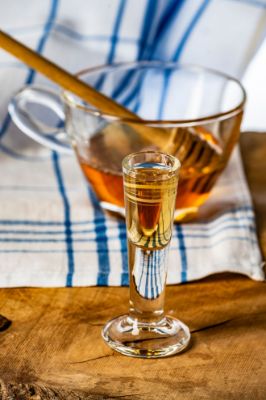Mead, known as "honey wine," is a centuries-old beverage that holds a special place in the hearts of aficionados and curious newcomers alike. Crafted from honey, water, and yeast, mead boasts a wide spectrum of flavors and styles, making it a versatile canvas for creativity. Among the many techniques available to mead-makers, barrel aging stands out as a means of imparting depth and character to this delightful libation. In this article, we will delve into the world of mead-making and how the careful selection of barrels can elevate your mead to new heights.
Understanding Mead
Mead is a beverage steeped in history and cherished in various cultures worldwide, from ancient Viking traditions to modern craft brewing scenes. The essence of mead lies in its simplicity, as it consists of only a few primary ingredients:
Honey: The quality and type of honey used play a pivotal role in shaping the flavor of the mead. Different varieties of honey, such as clover, wildflower, or orange blossom, offer distinct aromatic and taste profiles.
Water: The choice of water is crucial since it forms the base of the mead. Clean, pure water ensures that no impurities or undesirable minerals interfere with the final product.
Yeast: Yeast is responsible for fermenting the honey's sugars into alcohol. The selection of yeast strains influences both aroma and flavor, allowing for customization of the mead's character.
Optional Flavor Enhancements: Mead-makers often incorporate fruits, spices, or herbs to impart complexity and unique tastes. Common additions include raspberries, cloves, and lavender.
Barrel Aging Mead
Barrel aging mead is a time-honored method that introduces distinctive notes and nuances to the final product. The porous nature of wooden barrels allows mead to interact with the wood, air, and any previous occupants of the barrel. Here's how you can effectively use barrels for mead-making:
Choosing the Right Barrel:
- Start by selecting barrels made from oak, as it is the wood of choice for aging mead. Oak provides desirable flavors and aromas while allowing some oxygen exchange.
- Consider the size of the barrel, ranging from smaller 1-gallon barrels for intense flavor infusion to larger 5-gallon barrels for subtler effects.
Preparing the Barrel:
- Prior to using a new barrel, season it by filling it with water and allowing it to sit for several weeks. This process swells the wood, sealing any gaps.
- Thoroughly rinse the barrel to remove loose wood chips or debris.
The Aging Process:
- After the initial fermentation in glass or plastic containers, transfer your mead into the chosen barrel. Leave some headspace to accommodate expansion and contraction during aging.
- Store the barrel in a stable, cool, and dark environment. The aging duration can vary from several months to several years, depending on the desired outcome.
- Periodically taste the mead to monitor its progress and prevent over-oaking. Smaller barrels require more frequent tasting due to their faster aging process.
Blending and Bottling:
- Once your mead reaches the desired flavor profile, it's time to bottle it. You may also consider blending mead from multiple barrels to achieve a specific taste.
- Use a siphon to carefully transfer the mead from the barrel into bottles, ensuring that you avoid disturbing any sediment that may have formed during aging.
Conclusion
Mead-making combines tradition, innovation, and an endless array of possibilities for flavor exploration. Barrel aging, in particular, offers mead-makers a captivating journey to craft unique and unforgettable meads. Whether you are a seasoned enthusiast or just embarking on your mead-making adventure, selecting the right barrel can be the key to unlocking extraordinary flavors and aromas in your mead. So, gather your ingredients, choose your barrel wisely, and embark on the path to creating mead that truly stands out and delights the senses. Cheers to the art of mead-making!


